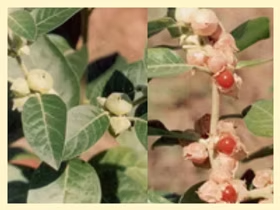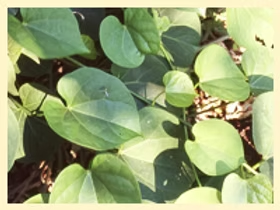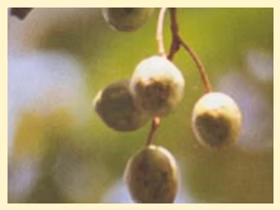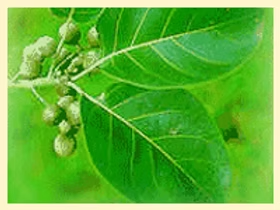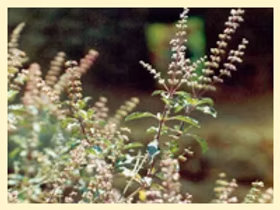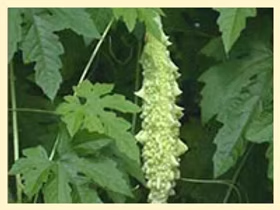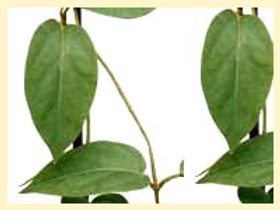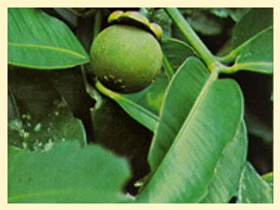Withania somnifera Dunal. (Ashvagandha) Family: Solonaceae
An erect, evergreen, tomentose shrub, found throughout the drier parts of India in waste places and on bunds. It is also cultivated for the medicinal roots. The alkaloids – withanoloids are hypotensive, bradycardiac, antioxidant, antidepressant, and respiratory-stimulating action. The hypotensive effect is due mainly to autonomic ganglion-blocking action. The total alkaloids showed relaxant and antispasmodic effects against several spasmogens on intestinal, uterine, bronchial, tracheal and blood-vascular muscles. Withaferin A exhibits potent anti-arthritic and anti- inflammatory activities.

